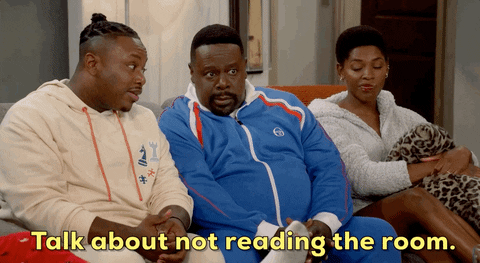
Do y’all ever feel like every other department gets budget secured before HR?
It goes a lil something like this:
Sales needs a new prospecting tool, request approved.
Marketing needs a new CRM, request approved.
Engineering needs a new data tool, request approved.
HR needs a new performance management tool, REQUEST DENIED.
Do not pass go, do not collect 200 dollars. Follow up required.
Then the questions and comments flow in:
- Why do you need that tool?
- What impact is it really going to make?
- Can you make it without it?
- Our employees hate doing that stuff anyways! What a waste.
I’ve been there and it has been ROUGH. But securing budget doesn’t have to always feel like a battle.
Here are 4 steps you can follow to set yourself up for success to secure the bag for all your HR tool hopes & dreams:
- Asses the current state
- Explaining the impact
- Find your advocates
- Having a backup plan
Step 1: Assess the current state

The first step to securing the bag involves reading the room.
You should be able to answer this question: What is the current state of the business?
If you are unsure how to answer that question, here are a few things to consider:
- What is the company’s position in the market? Consider: is the company a leader in an established space, is this an entirely new space, or is it in a crowded space. The goal is to understand where the company is in terms of market share and competition which can be indicators of financial performance. Pro-tip: you should always know your competitors and how they are performing.
- What challenges is the business facing? Consider: people, performance, financial, product-market fit, or growth. The goal is to understand what problems need to be solved. I think about this almost weekly!
- What are the financial trends? Consider: is the business losing $$, growing or staying stagnant? The goal is to understand revenue trends (are sales/profit increasing), profitability, and cashflow so you can understand if the company can financially afford your asks. HR & Finance should be bffs!
If you run through these questions and the outlook is not good… it might not be the best time to ask for budget.
On the flipside if everything is looking groovy, move on to step two.
No excuses: Your budget asks should ALWAYS be aligned with your company’s priorities.
JOIN 130K+ HR LEADERS
Get insights, learnings, and advice on how to build companies and cultures that people actually love.
No spam. Unsubscribe any time.
One last thing: understanding how your company is performing is crucial to be successful in your HR. It can help you anticipate many many challenges before they become bigger problems.
Step 2: Explain the Impact

Ever heard the phrase: what’s in it for me? WIIFM for short.
Everyone wants to know what they’re going to get out of something!
Think: what is the value prop of this tool?
Why: because whoever is approving your budget will want to understand the advantages and benefits of saying YES.
And depending on the audience this can look different!
Example:
You have a CEO who is obsessed with efficiency.
The HR team wants to ask for budget for a performance management tool.
The ask: Investing in this performance management tool will help streamline our processes and significantly reduce manual time and admin burden. This means I can focus on strategic projects to improve our employee engagement. The most engaged our employees are, the more productive they can be and the company can be more profitable.
This is a GREAT place to leverage data to support your ask.
Quick cheat sheet:
- If your CEO is concerned with cost, always bring it back to what your tool does in terms of saving in terms of $$.
- If your CEO is concerned with performance, frame your ask around how it aids and enables your employees to better perform and share any/all data around engagement.
- If your CEO is concerned with retaining talent, frame your ask how it helps keep your employees engaged and improves attrition. Excellent place to sprinkle in any data you have from exit interviews!
The bottom line: Never forget your WIIFM.
Step 3: Find your advocates

I’ll keep this short and sweet: finding your advocates is crucial for securing budget.
What that looks like:
- Identify your key stakeholders: who is impacted OR interested in your work? Spoiler alert: most employees at an organization have an opinion about HR things, including tools!
- Share your plan: in writing & verbally, folks respond differently and can be more thoughtful when they receive a message in different ways!
- Explain the WIIFM: what is your audience concerned with? Make that part of the WIIFM.
- Get their feedback: everyone has opinions and people like to know they are being heard.
- Secure their support on the plan: implement feedback if appropriate and follow back up to secure support. Make sure ot answer any outstanding questions. Also be sure to share what happens next, ie: i’m going to get budget approval i’d love your support.
Boom! Advocate born and momentum is built.
Sneaky move: if you know your CEO/decision makers really value the opinions of specific people at the organization – prioritize securing their buy-in. You want their advocacy in rooms or conversations you may not be in.
Step 4: Have a backup plan

Not everything will always go according to plan.
You could have a really reasonable request for a tool that is:
- Aligned with organizational goals
- Has potential to have a major impact
- Supported by folks across the organization
And due to a number of factors, the budget isn’t approved.
You should always have a back up plan. Like a game of chess, you need to always have multiple moves lined up.
That can seem exhausting but having 2-3 additional solutions in your back pocket is super helpful.
Never forget to discuss the tradeoffs.
If your budget doesn’t get approved for that tool, explaining what the tradeoff is is crucial!
And if you go with a different approach, the tradeoff is still relevant!
What this looks like: Since we didn’t approve the budget for that new performance management tool, our team will have to manually run reviews this year in Google docs which means we will be unable to update our handbook, improve our policies and address some gaps in our benefits.
Check mate?
Put it all together:

Ideally you make it through all 4 steps, get your budget approved and never have to use your potentially less ideal back up plan.
But, in HR we know sometimes things aren’t ideal.
You can do your best and still get shot down, it happens!
In that event, it’s helpful to:
- Ask WHY
- Ask WHEN
Asking why will help you understand what you could’ve missed.
Asking when will help you understand if there’s still a possibility in the future.
At any given time I have my wishlist and you should have yours!
My wishlist is basically if I could snap my fingers tomorrow, get all the budget I want, what tools would I ask for.
Hey, a gal can dream!
The wishlist is super helpful because it keeps me optimistic for the future.
What tools would you want? Start your wishlist today.
What’s next:

That concludes our very thrilling quarter all about HR tools.
Don’t worry, I’m always going to have thoughts on HR tech and how it can enable us to do this very tough, but sometimes fulfilling, job!
We’re about the head into the peak holiday weeks but rest assured I have some VERY FUN newsletters coming your way.
We’re ending this year with a bang!


